
| CAREER | 1948 Born in Hyogo, JAPAN 1975 Compleated Graduate school of master's program of Tokyo National University of Fine Arts and Music, Department of Sculpture 1976-'79 Studied at The Academy of Fine Arts of Roma, ITALY PERSONAL EXHIBITIONS: 1998 Gallery Okabe, Tokyo ('94) 1997 Aoyama Gakuin Women's Junior College, Tokyo SELECTED GROUP EXHIBITIONS: 2006 The 91th Exhibition of Nika, Tokyo Metropolitan Art Museum (every year since 1979) AMABIKI 2006, Sakuragawa, Ibaraki ('03/ '01/ '99) 1999 The 24th Exhibition of Koku-Ten, Isetan Museum, Tokyo (every year since 1986) |
AMABIKI 2008
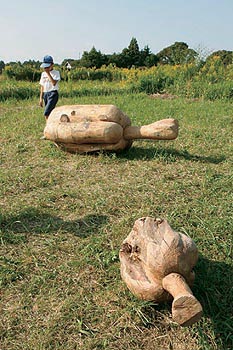
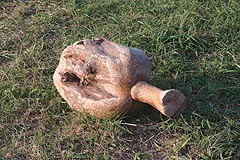
Figure of Plant -Wooden Fruit-
Zelcova, Mountain cherry
75×180×70 (h)cm
40×90×40 (h)cm
When I stand in front of the raw wood, I often get the feeling that just a very little work on it could bring forth a good form.
I worked on that kind of wood and created a single fruit.
I took time to fill in the blocks and join the raw wood together, and by the start of summer the elaborate piece of zelkova wood had dried and become a powerful sculpture.
I placed it boldly in a liberated space.
AMABIKI 2006
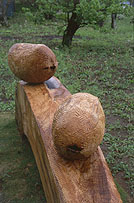
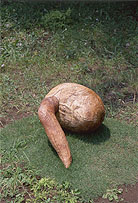
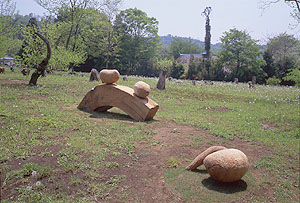
Figure of Plant -beans-
Zelkova, Cherry wood
35×230×110 (h)cm
35×60×47 (h)cm
This is a piece of keyaki, a Japanese zelkova wood that had been lying in my studio for ages. The rocks that were tangled within its roots were crushed up by the energy of its growth. As the days passed looking for a form, I developed an image of beans suddenly popping and setting down their roots.
THE 5TH EXHIBITION OF AMABIKI VILLAGE AND SCULPTURE
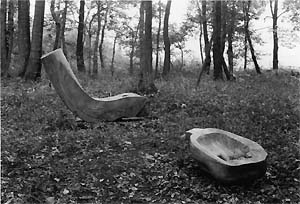
Figure of plants
Zelkova
35×200×90 cm
60×90×40 cm
People offer one another raw walnuts in Germany at the start of fall. I brought a few uneaten ones home and planted them in the garden beside my studio. The following year, after I had forgotten about them, some shoots came up that looked right. When I had forgotten again, I glanced there and saw half the hard walnut shell rolling around at the bottom of the stalk. I borrowed the strength of the giant zelkova tree to express the form of that bud.
THE 4TH EXHIBITION OF AMABIKI VILLAGE AND SCULPTURE
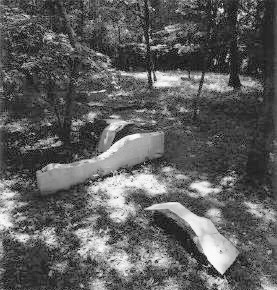
Flow
Kiri wood
250×250×60 cm
120×120×40 cm, and others
I found a grove that the sun penetrated into. I put together some boards I was carrying and thought about the image of circulating water. Departing from the usual forms, I continued this work up to the time of placement, and even now I'm arguing with myself about how to interact with this setting.
THE 3RD EXHIBITION OF AMABIKI VILLAGE AND SCULPTURE
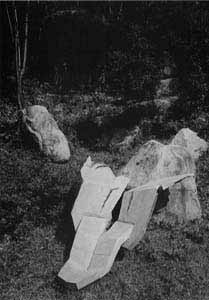
Big Petals
Kiri wood (Paulownia wood)
200×60×40 cm
180×130×40 cm
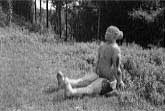
Moku gu
Camphor tree
112×90×120 cm



